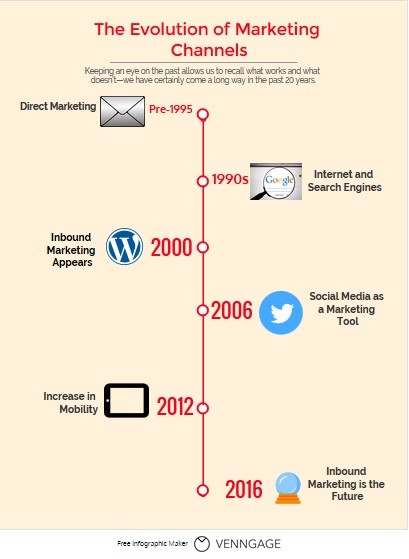Direct Marketing Channels
In the past, direct marketing was a really effective way of marketing. This included direct mail, targeted print newsletters, and product flyers or catalogs. These direct marketing channels were supplemented by outbound telemarketing.
Unfortunately, these marketing methods are often more expensive, time-consuming, and are often not as effective as newer forms of marketing. These forms of marketing have been in use for nearly as long as Americans have been creating magazines and letters and today people continue to rely on them.
As time goes on, marketing experts have become better at targeting specific demographics of people who are the most likely to purchase their products. This focus allows direct marketing to be more efficient and effective.
Television Advertising Moves Online
The 1990s were a huge decade for advertising technology. The Internet created new marketing channels that were more cost effective and simply worked better. Television use grew exponentially at that time, too. In the 1990s, television replaced print advertising as the most utilized form of advertising. Reviews grew from about $2.4 billion during this time to roughly $8.3 billion.
Search engines made their appearance in the mid-90s. Internet users grew by over 50 million people in the two years between 1995 and 1997. The term "search engine optimization" was also first used during this time. In 1998, Google created PageRank, which determines how pages should rank in search results for a specific term. Blogging was also developed around this time.

Moving to Inbound Marketing Channels
The dot.com bubble burst in 2000. Soon after, inbound marketing became the marketing tool of choice for those who were advertising online. Inbound marketing lets the user come to you—which provides better quality customers who are more likely to make purchases. The focus is on educating the consumer since they have more and easier access to information. This creates value for the customer instead of forcing unwanted ads on them.
Email marketing continued to increase. In 2010, roughly 90 percent of emails received were considered spam.
Social Media as a Marketing Channel
Social media sprang to life in the early 2000s. Facebook, probably the most well-known and widely-used social media platform today was first launched in 2004. Twitter was created in 2006. It wasn't until 2012 that social media and blogging really became recognized as a viable marketing option. In fact, as of 2012, 44 percent of businesses that used Facebook acquired customers through that particular marketing channel.
Going Mobile
Tablets, eReaders, and smartphone usage increased dramatically in 2012. Mobile shopping increased to 72.8 million people. Also in 2012, mobile internet users increased roughly 17 percent to 113.9 million people.
Mobile phone usage jumped to 242.6 million in 2012, and 106.7 million of those users had smartphones. Tablet users also increased to 54.8 million during that year.


